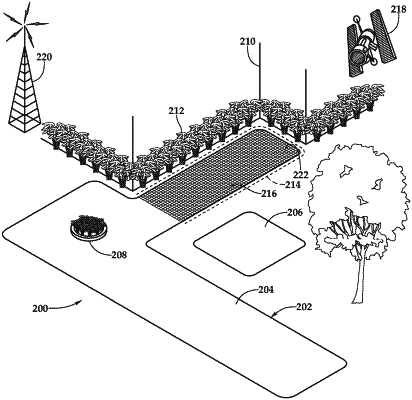| CPC G05B 19/042 (2013.01) [G05B 2219/2642 (2013.01)] | 14 Claims |

|
1. A smart lawnmower comprising:
a housing including a sensor, a processor and memory therein communicatively interconnected in a busing architecture;
a cutting subsystem secured to the housing, the cutting subsystem communicatively interconnected to the busing architecture, the cutting subsystem configured to cut lawn;
a drive subsystem secured to the housing, the drive subsystem communicatively interconnected to the busing architecture, the drive subsystem configured for locomotion and steering of the smart lawnmower;
an antenna secured to the housing and communicatively interconnected to the busing architecture, the antenna having a known spaced relationship to the cutting subsystem; and
the memory accessible to the processor, the memory including processor-executable instructions that, when executed, cause the processor to:
in a real-to-sim training phase, construct a simulated environment corresponding to a mowing-relevant portion of a real-world environment relative to semantic information, the semantic information being information that the smart lawnmower has about the real-world environment via at least one of the sensor, user input, and location signalization from the antenna;
in a sim-to-real mowing phase, synchronize the simulated environment and the real-world environment by receiving in real-time the semantic information from the real-world environment; and
upon the creation of the simulated environment, applying a mowing policy to the simulated environment to control the cutting subsystem and the drive subsystem in the real-world environment, the mowing policy including a designation within the simulated environment of at least one of a fixed zone and a floating zone, the fixed zone being an area in the simulated environment corresponding to an area in the real-world environment having reception of the location signalization, the floating zone being an area in the simulated environment corresponding to an area in the real-world environment having diminished reception of the location signalization.
|